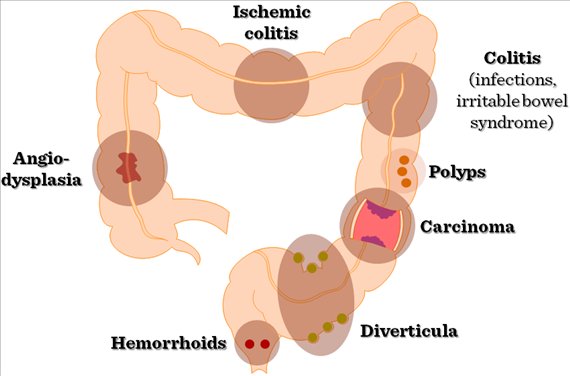Gastrointestinal blood loss. Gastrointestinal Bleeding: Symptoms, Causes, and Treatment Options
What are the common symptoms of gastrointestinal bleeding. How is gastrointestinal bleeding diagnosed. What are the treatment options for gastrointestinal bleeding. What are the main causes of gastrointestinal bleeding.
Understanding Gastrointestinal Bleeding: A Comprehensive Overview
Gastrointestinal (GI) bleeding is a serious medical condition that affects millions of people worldwide. It occurs when there is blood loss anywhere along the digestive tract, from the esophagus to the rectum. GI bleeding can range from mild and chronic to severe and life-threatening, making it crucial to understand its symptoms, causes, and treatment options.
The severity of GI bleeding can vary significantly, with some cases resolving on their own while others require immediate medical intervention. Despite improvements in diagnostic techniques and treatments, GI bleeding still carries a mortality rate of approximately 8%. This underscores the importance of early detection and proper management.
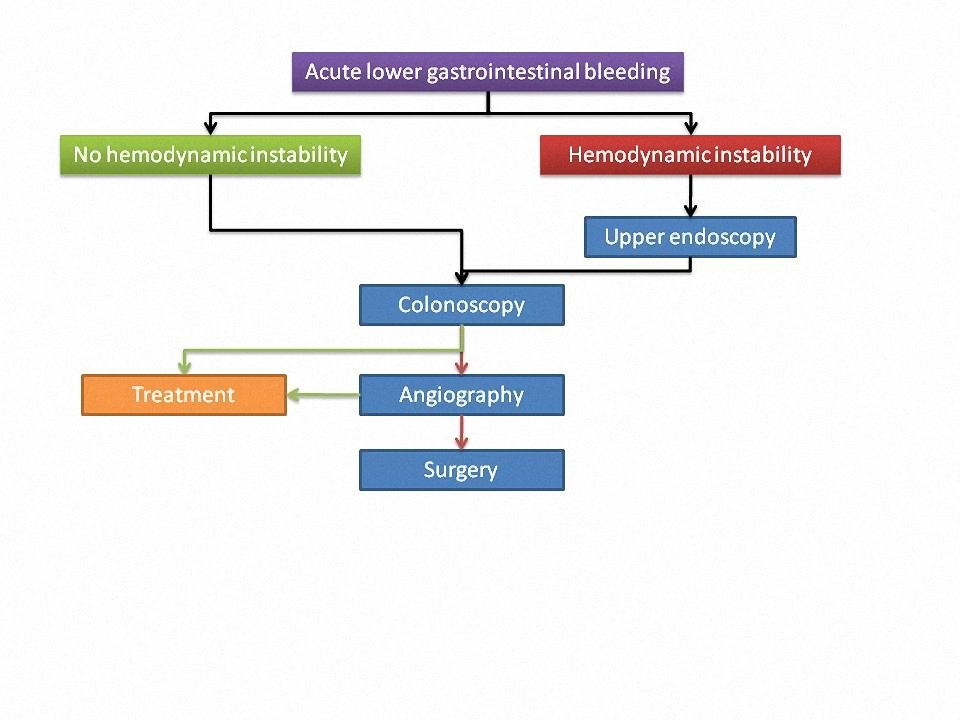
Recognizing the Signs and Symptoms of Gastrointestinal Bleeding
The symptoms of GI bleeding can vary depending on the location and severity of the bleed. Identifying these symptoms early can be crucial for timely intervention and improved outcomes.
Mild Chronic Bleeding
In cases of mild, chronic GI bleeding, patients may not notice any active bleeding. However, this persistent blood loss can lead to iron deficiency anemia over time. Symptoms of anemia may include:
- Weakness
- Pallor (pale skin)
- Dizziness
- Shortness of breath
- Angina (chest pain)
Acute and Severe Bleeding
More severe cases of GI bleeding can present with more obvious symptoms:
- Hematemesis (vomiting blood) – This may appear bright red or dark and coffee-like
- Melena (black, tarry stools) – Often indicates upper GI bleeding
- Hematochezia (bright red blood in stools) – Usually indicates lower GI bleeding
Can the color of blood in stool indicate the source of bleeding? Indeed, the appearance of blood can provide clues about the location of the bleed. Black, tarry stools often suggest an upper GI source, while bright red blood typically indicates a lower GI source, such as the colon or rectum.
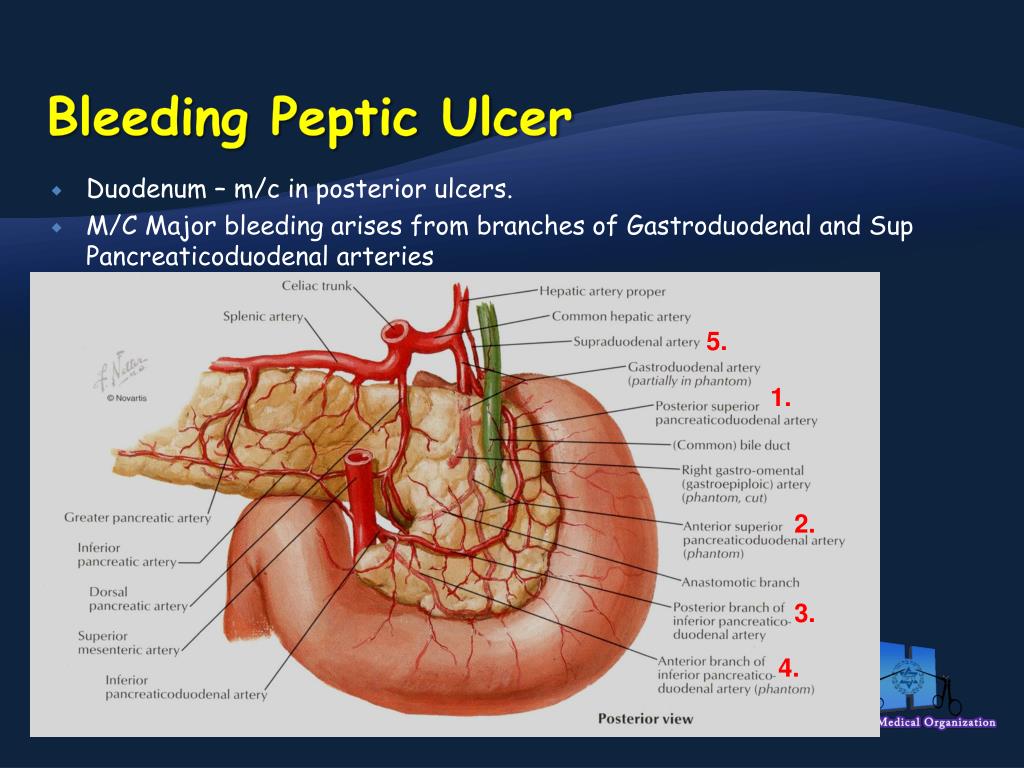
Diagnostic Approaches for Gastrointestinal Bleeding
Accurate diagnosis is crucial for effective treatment of GI bleeding. Healthcare providers employ various diagnostic tools and techniques to identify the source and severity of the bleed.
Upper GI Endoscopy
When upper GI bleeding is suspected, an upper GI endoscopy is typically the first diagnostic step. This procedure involves passing a flexible video endoscope through the mouth and into the stomach while the patient is sedated. It allows the doctor to examine the esophagus, stomach, and duodenum for potential bleeding sites.
Colonoscopy
For suspected lower GI bleeding, a colonoscopy is usually performed. This procedure involves passing a video colonoscope through the rectum and across the entire colon while the patient is sedated.
Additional Diagnostic Methods
In some cases, other diagnostic techniques may be employed:
- Nuclear bleeding scan
- Angiography
- Barium GI studies
How is chronic, low-grade bleeding investigated? For cases of chronic, occult bleeding leading to anemia, the diagnostic workup is typically conducted on an outpatient basis. This generally includes a colonoscopy and/or upper endoscopy to identify potential sources of chronic blood loss.

Treatment Strategies for Gastrointestinal Bleeding
The treatment approach for GI bleeding depends on the severity of the bleed, its location, and the underlying cause. Treatment options range from conservative management to surgical intervention.
Conservative Management
In some cases, GI bleeding may stop spontaneously. However, close monitoring is still essential. Conservative management may include:
- Intravenous fluid administration
- Blood transfusions (if necessary)
- Monitoring of vital signs and blood count
- Medication to reduce stomach acid production
Endoscopic Interventions
If a bleeding site is identified during endoscopy, various therapeutic measures can be employed to control the bleeding:
- Cautery
- Laser photo therapy
- Injection therapy
- Tamponade (applying pressure to the bleeding site)
Surgical Intervention
In cases where bleeding persists despite conservative and endoscopic treatments, surgery may be required as a last resort.
What factors determine the need for hospitalization in GI bleeding cases? Hospitalization is typically necessary for active or severe GI bleeding, especially if there are signs of shock, such as hypotension (low blood pressure), tachycardia (rapid heart rate), dizziness, or light-headedness.

Common Causes of Gastrointestinal Bleeding
Understanding the underlying causes of GI bleeding is crucial for effective treatment and prevention of recurrence. While there are numerous potential causes, some are more common than others.
Upper GI Tract Causes
The most common cause of upper GI bleeding is ulceration, which can occur in:
- The duodenum (just beyond the stomach)
- The stomach lining
- The esophagus
Another significant cause of upper GI bleeding is esophageal varices. These are essentially varicose veins in the esophagus, often resulting from underlying chronic liver disease such as cirrhosis.
Lower GI Tract Causes
Common causes of lower GI bleeding include:
- Hemorrhoids
- Diverticular disease
- Inflammatory bowel disease (such as Crohn’s disease or ulcerative colitis)
- Colorectal polyps or cancer
- Angiodysplasia (abnormal blood vessels in the gut)
Is it safe to assume that rectal bleeding is always due to hemorrhoids? No, it’s crucial never to assume that rectal bleeding is solely due to hemorrhoids. While hemorrhoids are a common cause, other conditions such as rectal cancer, polyps, ulcerations, proctitis, or infections can also cause bright red rectal bleeding. Any instance of rectal bleeding should be evaluated by a healthcare professional.

Preventing Gastrointestinal Bleeding: Risk Factors and Lifestyle Modifications
While not all cases of GI bleeding can be prevented, understanding the risk factors and making certain lifestyle modifications can help reduce the likelihood of developing this condition.
Risk Factors
Several factors can increase the risk of GI bleeding:
- Age (risk increases with age)
- Use of certain medications (such as NSAIDs or blood thinners)
- History of peptic ulcers
- Chronic liver disease
- Alcohol abuse
- Smoking
- H. pylori infection
Lifestyle Modifications
Certain lifestyle changes can help reduce the risk of GI bleeding:
- Limiting alcohol consumption
- Quitting smoking
- Managing stress
- Maintaining a healthy diet
- Exercising regularly
- Using medications as prescribed
How can the risk of NSAID-induced GI bleeding be minimized? If NSAIDs are necessary, using the lowest effective dose for the shortest duration possible can help reduce the risk. Additionally, taking these medications with food or using a protective agent like a proton pump inhibitor may be recommended in some cases.

Long-term Management and Follow-up for Gastrointestinal Bleeding
After the acute phase of GI bleeding has been managed, long-term follow-up and management are crucial to prevent recurrence and address any underlying conditions.
Follow-up Endoscopy
Depending on the cause of the bleeding, follow-up endoscopy may be recommended to ensure healing and prevent recurrence. For instance, patients with peptic ulcers may need repeat endoscopy to confirm ulcer healing.
Medication Management
Long-term medication management may be necessary, which could include:
- Proton pump inhibitors for acid suppression
- Antibiotics for H. pylori eradication
- Medications to manage underlying conditions (such as inflammatory bowel disease)
Lifestyle Modifications
Patients may need to make long-term lifestyle changes to reduce the risk of recurrence. These might include dietary modifications, stress management techniques, and avoiding triggers such as alcohol or certain medications.
How often should follow-up appointments be scheduled after a GI bleeding episode? The frequency of follow-up appointments will depend on the severity of the bleeding, the underlying cause, and the individual patient’s health status. Initially, appointments may be more frequent (e.g., every few weeks), gradually decreasing in frequency as the patient’s condition stabilizes.

Emerging Trends and Future Directions in Gastrointestinal Bleeding Management
The field of gastroenterology is continually evolving, with new technologies and treatment approaches emerging to improve the management of GI bleeding.
Advanced Endoscopic Techniques
Newer endoscopic techniques are being developed to improve both diagnosis and treatment of GI bleeding. These include:
- Capsule endoscopy for small bowel examination
- Double-balloon enteroscopy for accessing difficult-to-reach areas of the small intestine
- Hemostatic powders for controlling diffuse bleeding
Artificial Intelligence in Diagnosis
Artificial intelligence (AI) and machine learning algorithms are being developed to assist in the diagnosis of GI bleeding. These technologies could potentially improve the accuracy and speed of diagnosis, particularly in analyzing endoscopic images.
Personalized Medicine Approaches
As our understanding of the genetic and molecular basis of GI diseases improves, there is a growing trend towards personalized medicine approaches. This could lead to more targeted therapies based on an individual’s specific risk factors and genetic profile.

How might AI impact the future of GI bleeding management? AI could potentially revolutionize GI bleeding management by improving diagnostic accuracy, predicting high-risk patients, and even suggesting optimal treatment strategies based on vast amounts of clinical data.
In conclusion, gastrointestinal bleeding remains a significant clinical challenge, but advancements in diagnosis, treatment, and management continue to improve outcomes for patients. By understanding the symptoms, causes, and treatment options, individuals can seek timely medical attention and healthcare providers can offer more effective care. As research progresses, we can expect even more sophisticated and personalized approaches to managing this complex condition.
Gastrointestinal Bleeding – Wake Gastroenterology
Gastrointestinal (GI) bleeding is a common clinical problem frequently requiring hospitalization. It can vary in degrees, from massive life-threatening hemorrhage to a slow, insidious chronic blood loss. The overall mortality for severe GI bleeding is approximately 8 percent, but this number is diminishing with the arrival of superior diagnostic techniques and newer medical treatments. Many bleeding episodes resolve on their own, but it is still imperative that the bleeding site be determined. An exact diagnosis may prevent a recurrence of bleeding and may help us treat future episodes more effectively. Also, making an accurate diagnosis can allow a patient to be treated appropriately for the underlying condition that caused the bleeding in the first place.
What are the symptoms?
The symptoms of GI bleeding depend on the acuteness and on the source of the blood loss.
Mild, chronic GI blood loss may not show any active bleeding, but can still result in an iron deficiency anemia. Many of these patients never notice any blood loss, but it occurs in small amounts with the bowel movement so that it is not noticeable. Blood in the stool often can be detected by hemoccult testing (testing for blood in your stool) during a routine office examination.
Many of these patients never notice any blood loss, but it occurs in small amounts with the bowel movement so that it is not noticeable. Blood in the stool often can be detected by hemoccult testing (testing for blood in your stool) during a routine office examination.
In more severe cases of chronic or acute bleeding, symptoms may include signs of anemia, such as weakness, pallor, dizziness, shortness of breath or angina. More obvious bleeding may present with hematemesis (bloody vomit), which may either be red or dark and coffee-like in appearance.
Blood in the stool could either be bright red, burgundy and clotted, or black and tarry in appearance, depending on the location of the bleeding source. A black, tarry stool (melena) often indicates an upper GI source of bleeding although it could originate from the small intestine or right colon. Other causes of a black stool might include iron or ingestion of bismuth (Pepto-Bismol). Hematochezia, or bright red blood can be mixed in with the stool or after the bowel movement and usually signifies a bleeding source close to the rectal opening. This is frequently due to hemorrhoids; however, you should never assume rectal bleeding is due to hemorrhoids. Conditions like rectal cancer, polyps, ulcerations, proctitis or infections can also cause this type of bright red blood.
This is frequently due to hemorrhoids; however, you should never assume rectal bleeding is due to hemorrhoids. Conditions like rectal cancer, polyps, ulcerations, proctitis or infections can also cause this type of bright red blood.
How is it diagnosed?
If it is suspected that the bleeding is in the upper gastrointestinal tract, then an upper GI endoscopy is usually the first step. This is a flexible video endoscope that is passed through the mouth and into the stomach while the patient is sedated. It allows the doctor to examine the esophagus, stomach and duodenum for any potential bleeding sites. If a site is detected, therapeutic measures can be used to control the bleeding. For example, a bleeding ulcer may be controlled with use of cautery, laser photo therapy, injection therapy or tamponade.
If the bleeding is suspected to be in the lower GI tract or colon, then a colonoscopy is usually performed. In a colonoscopy, a video colonoscope is passed through the rectum and across the entire colon, while the patient is sedated.
Other diagnostic methods for detecting a bleeding source might include a nuclear bleeding scan, angiography, or barium GI studies.
In the case of chronic low-grade or occult bleeding which may result in anemia, the work-up to discover the source of the bleeding is usually done on an outpatient basis. Generally this consists of a colonoscopy and/or upper endoscopy to look for any potential sources of chronic blood loss.
Once the cause for the blood loss is determined, appropriate treatment and management recommendations can be made.
How is GI bleeding treated?
If GI bleeding is very active or severe in nature, it may require hospitalization. Shock can occur when blood loss approaches approximately 40 percent of blood volume. If there is evidence of hypotension (low blood pressure) or a fast heart rate, dizziness, or light-headedness, then treatment would include IV fluids and monitoring of the blood count, with blood transfusions given, if necessary.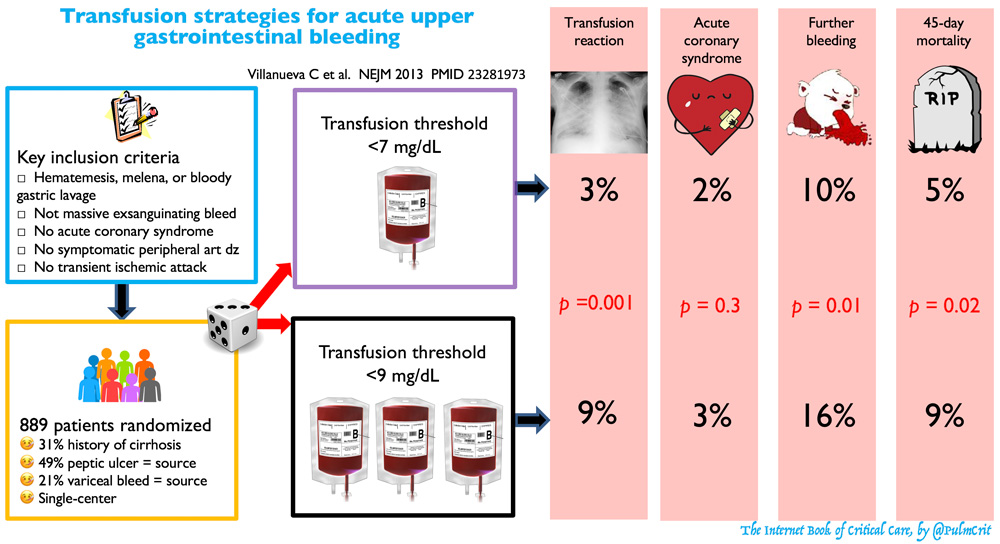
While in the hospital, the patient will continue to be monitored closely and certain medications will be employed in an attempt to stop the bleeding. In addition, diagnostic tests are performed.
In some cases, GI bleeding will stop spontaneously.
If the bleeding persists, despite all of the above-mentioned therapeutic techniques, then surgery might be required as a last resort.
What causes GI bleeding?
The most common cause of an upper GI bleed is an ulceration, either in the duodenum (just beyond the stomach), in the stomach lining itself, or in the esophagus. Esophageal varices, or varicose veins, are usually the result of underlying chronic liver disease like cirrhosis and these can often bleed very briskly. A tear at the junction of the esophagus and stomach sometimes also occurs as a result of repeated vomiting or retching. In addition, tumors or cancers of the esophagus or stomach can also cause bleeding.
Factors that may aggravate upper GI bleeding include use of anti-inflammatory medications (in particular aspirin other arthritis drugs), underlying chronic liver disease, thinning of the blood from certain medications like Coumadin, or underlying medical problems like chronic renal disease, cardiac or pulmonary diseases.
The most common cause of bleeding from the lower GI tract or colon is diverticulosis. This accounts for over 40 percent of these cases. If diverticular disease is not found, then a patient could have an angiodysplasia which is a tiny blood vessel lining the colon that sometimes can bleed briskly or ooze chronically. Colon cancers or colon polyps might also produce lower GI bleeding, as well as different causes for colitis. Colitis is an inflammation or ulceration of the lining of the colon that could be due to ulcerative colitis, Crohn’s disease, radiation therapy, or poor circulation to the colon itself.
For More Information
To learn more about this topic, please visit:
American College of Gastroenterology
Small Bowel Bleeding – American College of Gastroenterology
Overview
The small bowel (or small intestine) is the longest portion of the gastrointestinal (GI) tract. It is called “small” because it is thin or narrow compared with the “large” bowel (also known as the colon), but it is much longer than the large bowel (14 feet on average). The small intestine is involved in nutrient absorption from food.
The small intestine is involved in nutrient absorption from food.
GI bleeding occurs when an abnormality on the inner lining begins to bleed. Approximately 5% of all GI bleeding comes from the small bowel. Abnormal blood vessels (arteriovenous malformations or AVMs) cause 30 to 40% of bleeds. AVMs are the main source of bleeding in patients over the age of 50 years. Tumors (benign and malignant), polyps, Crohn’s disease, and ulcers are some of the other causes of bleeding.
Multiple tests can be used to diagnose and treat the source of small bowel bleeding, including: endoscopy, enteroscopy, x-ray studies, capsule endoscopy, deep small bowel enteroscopy, and intraoperative enteroscopy. AVMs can typically be treated with cautery delivered through an endoscope or enteroscope. Tumors (benign and malignant) can be biopsied and have their location marked using endoscopy, but surgery is typically required to take them out. Other conditions, such as Crohn’s disease, are often treated with medications.
Other conditions, such as Crohn’s disease, are often treated with medications.
Symptoms
Bleeding from the small bowel may be slow or fast. When the bleeding is slow, it may cause anemia (a low blood count). When the bleeding is slow it may not be visible in the stool. Anemia may cause symptoms such as tiredness and shortness of breath, but many people have no symptoms. If the bleeding is fast it is called a hemorrhage. People with hemorrhage may notice blood when they move their bowels, or their bowel movements may be black and tarry.
Causes
The causes of bleeding in the small bowel are different from those in the colon or the stomach. The most common causes of bleeding from the colon are polyps, diverticulosis (small out-pouchings in the wall of the colon), or cancer. Upper GI (esophagus, stomach, or duodenum) bleeding is most often due to ulcers.
In the small bowel, 30 to 40% of bleeding is caused by abnormal blood vessels in the wall of the small bowel. These abnormal blood vessels have many names, including angioectasias, angiodysplasias, or arteriovenous malformations (AVMs). In people over the age of 50 years, AVMs are the most common cause of small bowel bleeding. Other causes of small bowel bleeding include benign (non-cancerous) and malignant (cancerous) tumors, polyps, Crohn’s disease (a type of inflammatory bowel disease), and ulcers.
These abnormal blood vessels have many names, including angioectasias, angiodysplasias, or arteriovenous malformations (AVMs). In people over the age of 50 years, AVMs are the most common cause of small bowel bleeding. Other causes of small bowel bleeding include benign (non-cancerous) and malignant (cancerous) tumors, polyps, Crohn’s disease (a type of inflammatory bowel disease), and ulcers.
Risk Factors
AVMs become more common as people age and are associated with other medical problems, such as chronic kidney disease and certain types of heart disease (called valvular heart disease). The use of nonsteroidal anti-inflammatory drugs (NSAIDS) like ibuprofen or aspirin can cause ulcers in the small bowel.
Diagnosis
There are multiple tests for evaluating the small bowel. In most cases, the first step is endoscopy and/or enteroscopy. If that fails to find the source of bleeding, a common next step is capsule endoscopy. X-ray options include a small bowel follow-through or a computed tomographic scan (also known as a CT or CAT scan) of the small bowel.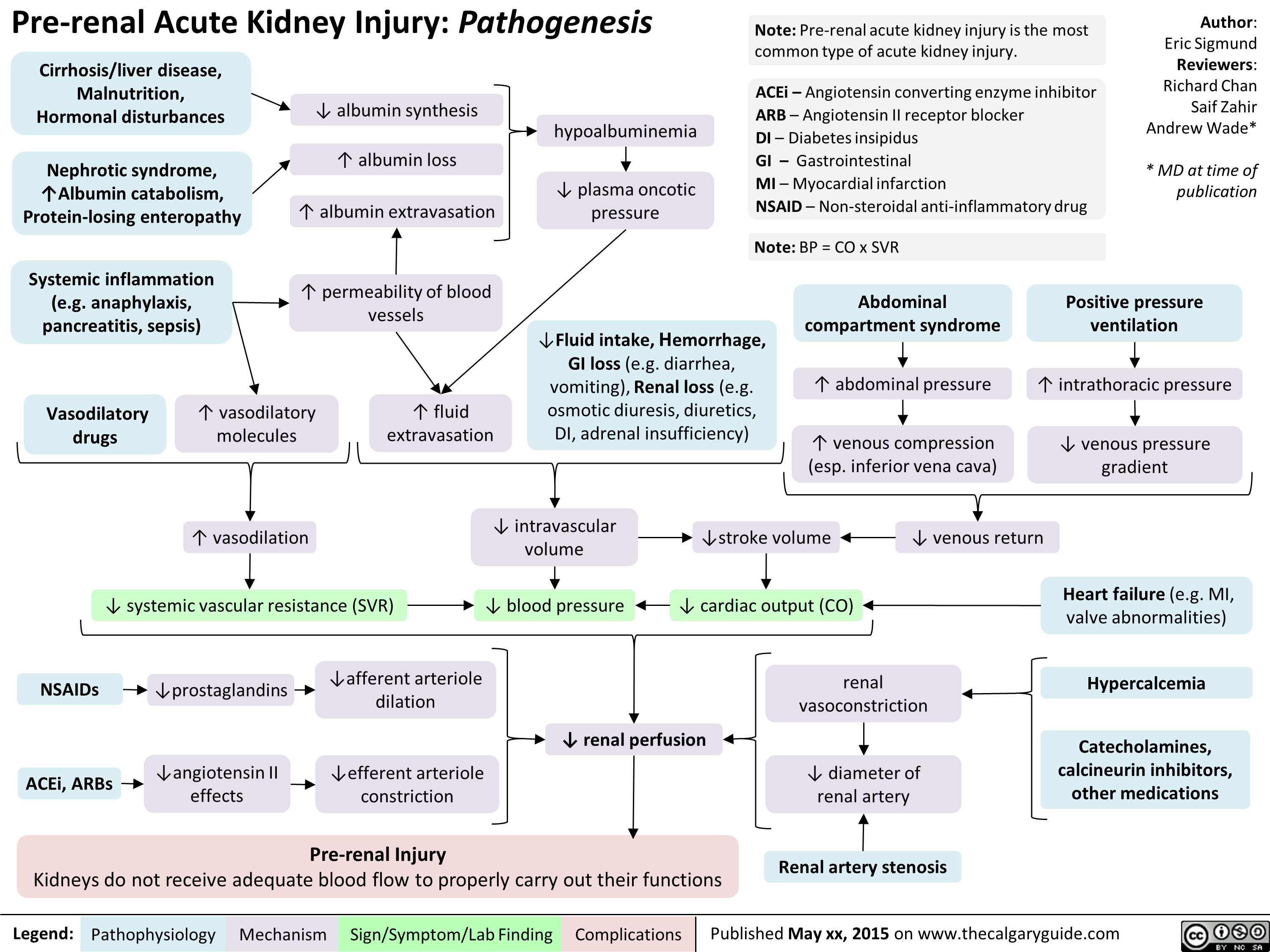 Deep small bowel enteroscopy can now be preformed using special scopes with inflatable balloons and/or overtubes. The final option is intraoperative enteroscopy. Intraoperative enteroscopy requires surgery and is usually only done if the other tests are negative. All of these methods are discussed in detail below.
Deep small bowel enteroscopy can now be preformed using special scopes with inflatable balloons and/or overtubes. The final option is intraoperative enteroscopy. Intraoperative enteroscopy requires surgery and is usually only done if the other tests are negative. All of these methods are discussed in detail below.
Endoscopy and enteroscopy
Endoscopes and enteroscopes are instruments used by doctors to evaluate the stomach and small bowel. Endoscopy refers to the examination of the bowel using a scope. At times the term is used specifically to indicate a procedure using a standard upper endoscope, but it can also be used more broadly to include tests done with any type of scope. Endoscopes and enteroscopes resemble long, thin tubes with a light and a camera at one end. The images obtained are displayed on a monitor. The scopes have channels that allow special equipment to be passed down them. This equipment can be used to treat whatever is bleeding, to take biopsies, or to mark the location of a problem with a tattoo to aid a surgeon in locating it later.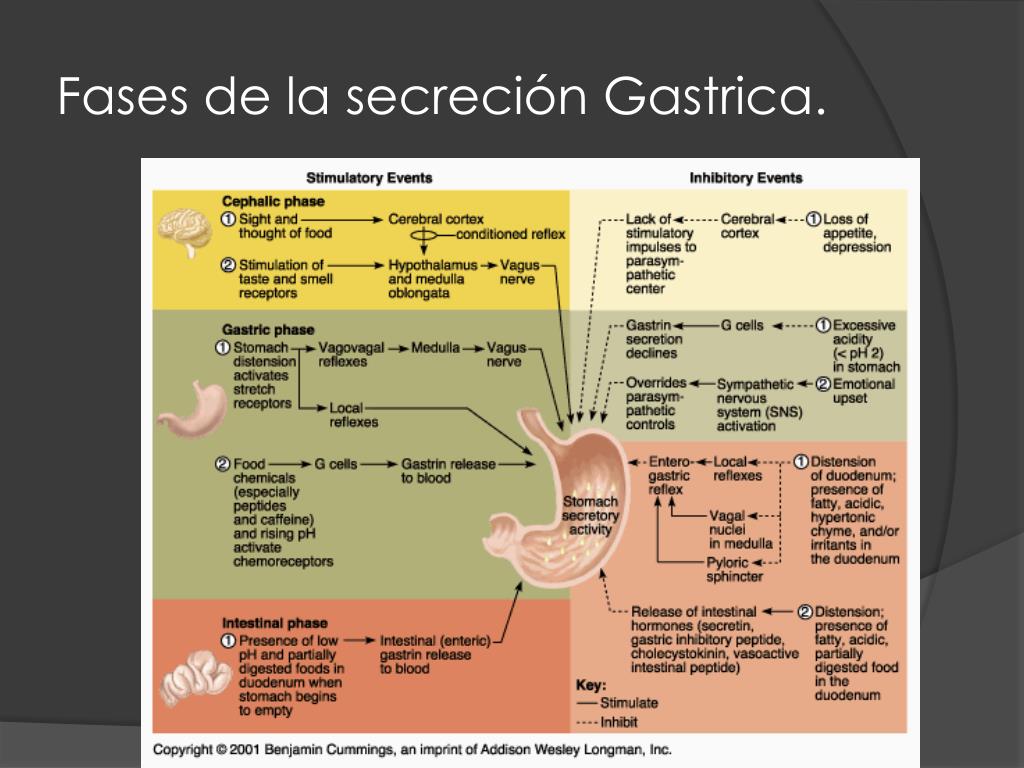
The test begins with the patient receiving medications to make him or her sleepy. The doctor then passes the scope through the mouth. A regular endoscope is capable of examining the esophagus, stomach, and the first portion of the small bowel, known as the duodenum. In cases where the source of bleeding is thought to be lower down in the small bowel, a longer scope, known as an enteroscope, can be used. This scope is capable of reaching the middle portion of the small bowel, known as the jejunum.
X-ray studies
X-ray studies are sometimes used in people with bleeding because 20-25% of small bowel bleeding is caused by abnormalities in the intestinal wall that can be seen by standard or specialized x-ray studies, such as tumors. There are three x-ray tests commonly used in the evaluation of the small bowel – small bowel follow-through, enteroclysis, and CT enterography.
The small bowel follow-through test is a series of abdominal x-rays that are taken at different times after a patient drinks a white, chalky fluid called barium that shows up on x-rays.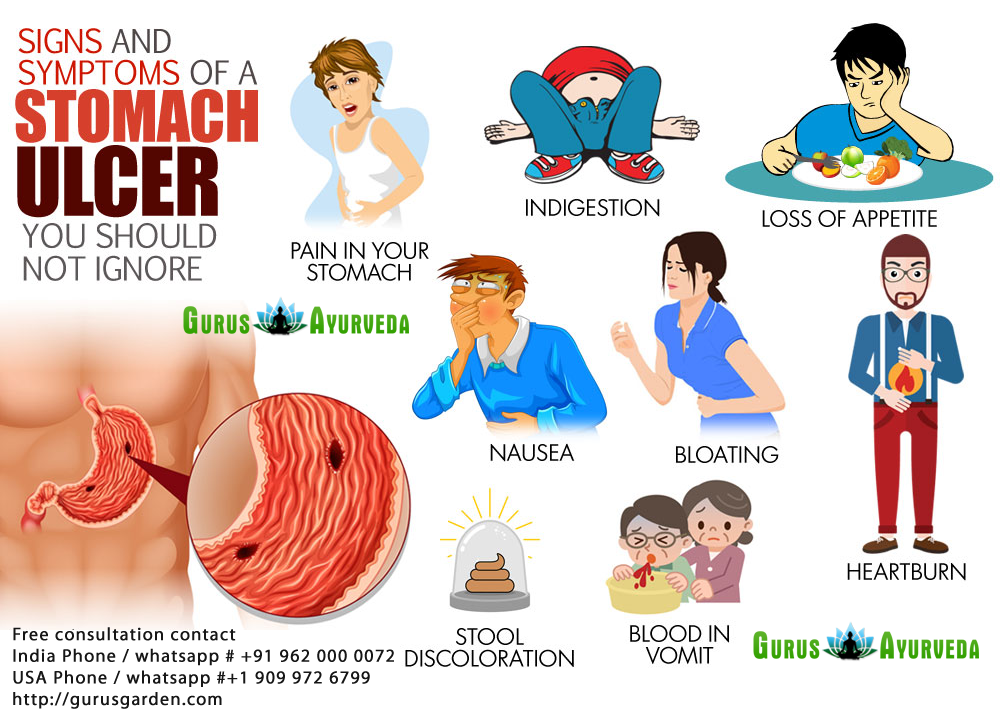 The test allows the doctor to examine the lining of the intestine for any irregularities. The test is good for large abnormalities, but can miss many smaller ones. However, it is safe and easy to tolerate.
The test allows the doctor to examine the lining of the intestine for any irregularities. The test is good for large abnormalities, but can miss many smaller ones. However, it is safe and easy to tolerate.
A second x-ray test, the enteroclysis study, is similar to the small bowel follow-through in that it uses barium to visualize the inner wall of the small bowel. It is more invasive because it requires a small tube called a catheter to be slowly advanced from the nose down the esophagus, through the stomach, and into the small bowel, to allow for air and barium to be instilled. The advantage of this study is that pictures from enteroclysis have better resolution, so abnormalities missed by the small bowel follow-through test may be detected. A disadvantage of the enteroclysis study is that it can be an uncomfortable examination due to the presence of the catheter and the use of air to distend the small bowel while taking pictures. In some cases a CT scan is used instead of regular x-rays.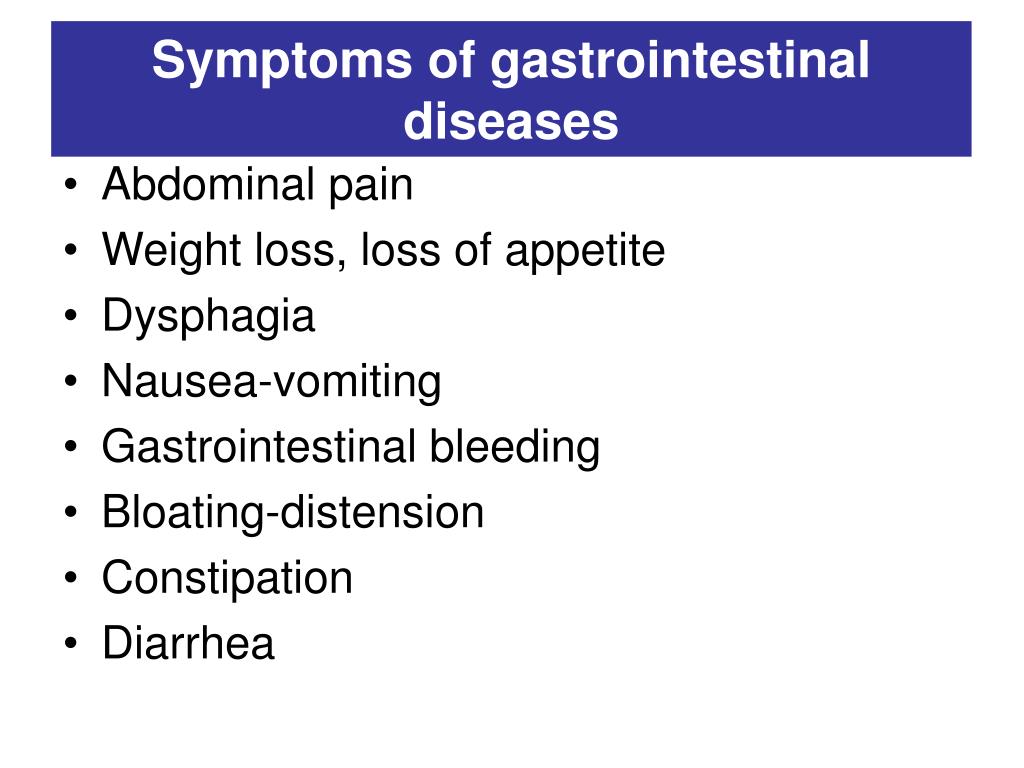 This allows for even more detail to be seen.
This allows for even more detail to be seen.
A third test is known as a CT enterography. A CT enterography is done the same way a normal CT scan is done. The patient drinks an oral contrast solution (often dilute barium), while also receiving intravenous (IV) contrast. Then numerous, very detailed images are obtained. A CT enterography differs from a standard CT scan in that the type of contrast that the patient drinks is designed to allow for a more detailed inspection of the lining of the small bowel.
While none of these tests is perfect at finding abnormalities, the advantage of these tests is that they can sometimes find bleeding sources that are out of reach of a standard enteroscope. The major limitations of these studies are that they cannot detect AVMs, and if an abnormality is seen, there is no way to apply immediate treatment to stop the bleeding, to take biopsies to confirm a diagnosis, or to mark the location of the lesion with a tattoo. In addition, some patients are allergic to the IV contrast that is used as part of the CT scan.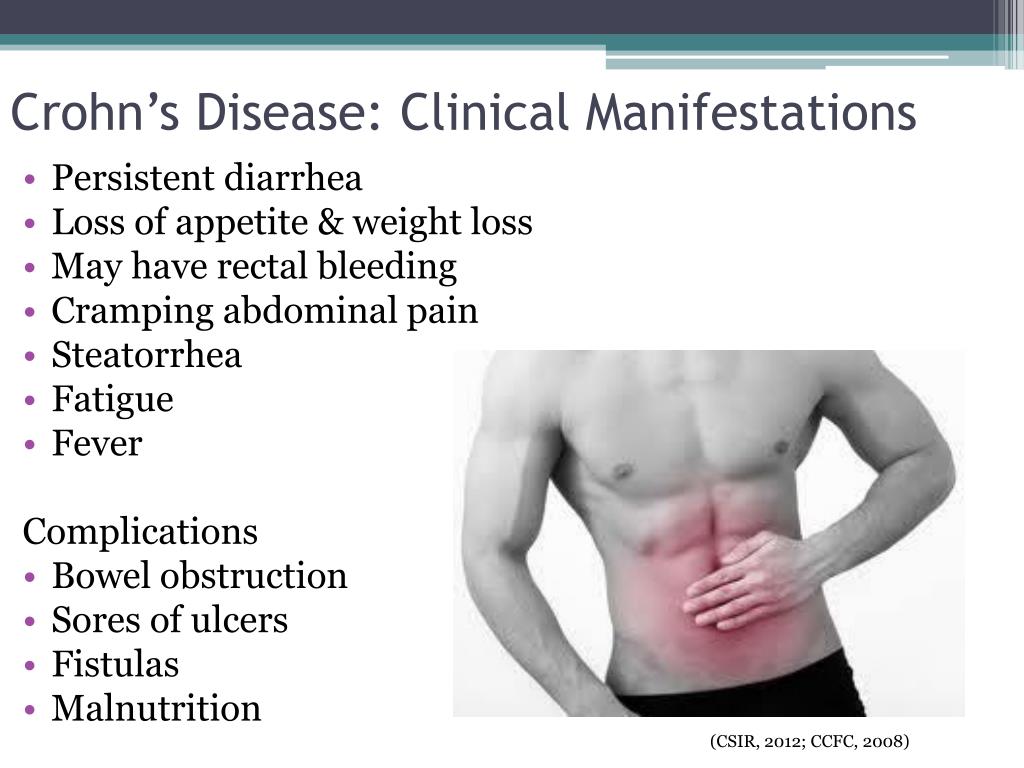
Capsule endoscopy
Capsule endoscopy uses a device that is about the size of a large pill. It is 1-1/8 inches long and 3/8 inches wide (26 mm x 11 mm). It is made up of a battery with an 8-hour lifespan, a strong light source, a camera, and a small transmitter. Once swallowed, the capsule begins transmitting images of the inside of the esophagus, stomach, and small bowel to a receiver worn by the patient. The capsule takes two pictures per second, for a total of about 55,000 images. After 8 hours, the patient returns the receiver to the doctor who downloads the information to a computer and then can review in detail the 8 hours of pictures of the capsule passing through the intestine. The patient passes the capsule through the colon and it is eliminated in the stool and discarded.
The capsule is generally safe and easy to take; however, rarely the capsule can get stuck in the small intestine. This may happen if there has been prior abdominal surgery causing scarring or other conditions that cause narrowing of the small intestine. If the capsule becomes stuck, endoscopic or surgical removal is necessary. However, if the capsule becomes stuck, there is a good chance that it is stuck at the place where the bleeding is coming from. So the procedure to get the capsule (endoscopy or surgery) may be able to treat the bleeding site at the same time. In about 15% of exams, the capsule does not view the entire small bowel prior to the battery running out and may need to be repeated.
If the capsule becomes stuck, endoscopic or surgical removal is necessary. However, if the capsule becomes stuck, there is a good chance that it is stuck at the place where the bleeding is coming from. So the procedure to get the capsule (endoscopy or surgery) may be able to treat the bleeding site at the same time. In about 15% of exams, the capsule does not view the entire small bowel prior to the battery running out and may need to be repeated.
Like x-rays, the capsule cannot be used to take biopsies, apply therapy, or mark abnormalities for surgery. Moreover, the capsule cannot be controlled once it has been swallowed, so once it has passed a suspicious area, it cannot be slowed to better look at the area. Despite these limitations, capsule endoscopy is frequently the test of choice for finding a source of small bowel bleeding if standard endoscopy has failed to do so because it is able to look at the whole small bowel and is an easy test for most people to do.
Overall, in patients with occult bleeding (blood is microscopically present in the stool, but the stool looks normal), capsule endoscopy finds a cause of bleeding in up to 67% of patients. In cases of overt bleeding (blood is seen in the stool or the stool is black and tarry), the results are highly variable. If the bleed happened in the past, the yield may be as low as 6%. If, however, the doctor believes that there is active bleeding occurring at the time of the test, the yield is >90%.
In cases of overt bleeding (blood is seen in the stool or the stool is black and tarry), the results are highly variable. If the bleed happened in the past, the yield may be as low as 6%. If, however, the doctor believes that there is active bleeding occurring at the time of the test, the yield is >90%.
Deep small bowel enteroscopy
In cases where a lesion has been found deep in the small bowel, beyond the reach of standard endoscopy, evaluation of the deep small bowel may be needed. One option to further evaluate or to treat the lesion is known as double balloon enteroscopy. Double balloon enteroscopy uses two balloons attached to the scope to help the scope move through the small bowel. Double balloon enteroscopy is able to reach very far into the small bowel (in some cases as far as the ileum, which is the final segment of the small bowel). This scope can also be inserted through the anus, which allows for examination of the deepest parts of the small bowel (the scope must first pass through the colon).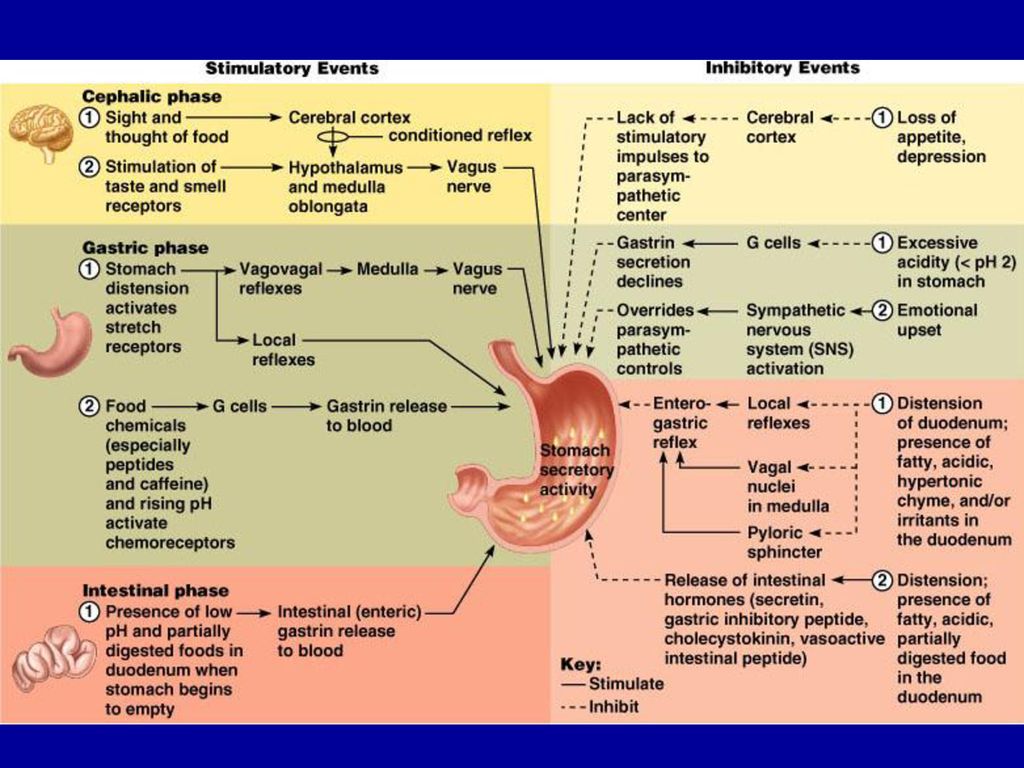 In some cases, by doing the test through both the mouth and through the anus, it is possible to examine the entire length of the small bowel, though this is not always possible.
In some cases, by doing the test through both the mouth and through the anus, it is possible to examine the entire length of the small bowel, though this is not always possible.
A double balloon enteroscopy test often takes a couple of hours to perform, as opposed to 20 minutes for standard endoscopy. Because an examination using a double balloon enteroscope is much more involved than standard endoscopy, it is usually only used if a bleeding site is found on either an x-ray or capsule endoscopy and is out of reach of a standard enteroscope. In one study, double balloon enteroscopy was able to locate a bleeding source in 74% of patients.
Because the test is done with an enteroscope, if a source of bleeding is found it may be possible to treat it, take biopsies, or mark the area with a tattoo. If a source is found, it can be treated in about 60 to 70 percent of people.
In addition to double balloon enteroscopy, there are two other options for deep small bowel enteroscopy. One is single balloon enteroscopy, which is a test similar to double balloon enteroscopy, though in this case there is only one balloon attached to the scope. A second option is deep small bowel enteroscopy using a special spiral tube that fits over the scope and allows the endoscope to be advanced into the deep small bowel.
One is single balloon enteroscopy, which is a test similar to double balloon enteroscopy, though in this case there is only one balloon attached to the scope. A second option is deep small bowel enteroscopy using a special spiral tube that fits over the scope and allows the endoscope to be advanced into the deep small bowel.
Intraoperative enteroscopy
In some cases, surgery may be needed. Intraoperative enteroscopy is carried out in the operating room under general anesthesia. The surgeon, often working with a gastroenterologist (a doctor who specializes in the GI tract), inserts the endoscope through the patient’s mouth or through a small incision in the small bowel (an enterotomy). The surgeon then advances the endoscope through the intestine to examine the entire small bowel. The advantage of intraoperative enteroscopy is that it allows the doctor to treat the cause of bleeding if it is found (for AVMs), or to remove masses or polyps. Because it is an invasive, surgical procedure, however, intraoperative enteroscopy is usually only used when other methods have failed to find or treat the source of bleeding. Overall, it is effective in treating the source of bleeding in approximately 70% of the patients who require the procedure.
Overall, it is effective in treating the source of bleeding in approximately 70% of the patients who require the procedure.
Treatment
In cases of AVMs, a small amount of electric current can be delivered through the endoscope to cauterize the abnormality. If the AVM is discovered during endoscopy, the treatment can be done immediately without requiring further endoscopy. If the bleeding source is found by capsule endoscopy, treatment options include endoscopy, standard enteroscopy, deep enteroscopy, or intraoperative enteroscopy (depending on the location of the bleeding site and prior attempts at treating it). In rare cases when there are a lot of AVMs in a segment of small bowel, the segment of small bowel may need to be removed surgically.
Polyps can often be removed with an endoscope. Sometimes surgery is needed if the polyp cannot be removed with an endoscope. Tumors, both benign and malignant, typically require surgical removal (while benign tumors do not always need to be removed, if they are causing a lot blood loss they usually need to be taken out). Other causes of small bowel bleeding can be treated with medicines (e.g., Crohn’s disease or medication induced ulcers).
Other causes of small bowel bleeding can be treated with medicines (e.g., Crohn’s disease or medication induced ulcers).
Author(s) and Publication Date(s)
John R. Saltzman, MD, FACG, and Anne C. Travis, MD, MSc, FACG, Brigham and Women’s Hospital, Harvard Medical School, Boston, MA – Updated February 2009. Updated December 2012.
John R. Saltzman, MD, FACG, and Richard S. Tilson, MD, Gastroenterology Consultants of Greater Lowell, North Chelmsford, MA – Published June 2004.
Return to Top
Gastrointestinal bleeding. What is gastrointestinal bleeding?
IMPORTANT
The information in this section should not be used for self-diagnosis or self-treatment. In case of pain or other exacerbation of the disease, only the attending physician should prescribe diagnostic tests. For diagnosis and proper treatment, you should contact your doctor.
Gastrointestinal bleeding is the outflow of blood from eroded or pathologically damaged blood vessels into the lumen of the digestive organs. Depending on the degree of blood loss and the localization of the source of bleeding, vomiting of the color of “coffee grounds”, tarry stools (melena), weakness, tachycardia, dizziness, pallor, cold sweat, fainting may occur. The source is established taking into account the data of FGDS, enteroscopy, colonoscopy, sigmoidoscopy, diagnostic laparotomy. Bleeding can be stopped conservatively or surgically.
Depending on the degree of blood loss and the localization of the source of bleeding, vomiting of the color of “coffee grounds”, tarry stools (melena), weakness, tachycardia, dizziness, pallor, cold sweat, fainting may occur. The source is established taking into account the data of FGDS, enteroscopy, colonoscopy, sigmoidoscopy, diagnostic laparotomy. Bleeding can be stopped conservatively or surgically.
- Causes
- Pathogenesis
- Classification
- Symptoms
- Diagnostics
- Treatment of gastrointestinal bleeding
- Prognosis and prevention
- Prices for treatment
General
Gastrointestinal bleeding is the most common complication of a wide range of acute or chronic diseases of the digestive system, representing a potential danger to the patient’s life. The source of bleeding can be any part of the gastrointestinal tract – the esophagus, stomach, small and large intestines. According to the frequency of occurrence in abdominal surgery, gastrointestinal bleeding is in fifth place after acute appendicitis, cholecystitis, pancreatitis, and strangulated hernia.
According to the frequency of occurrence in abdominal surgery, gastrointestinal bleeding is in fifth place after acute appendicitis, cholecystitis, pancreatitis, and strangulated hernia.
Gastrointestinal bleeding
Causes
To date, more than a hundred diseases have been described that may be accompanied by gastrointestinal bleeding. All hemorrhages can be conditionally divided into 4 groups: bleeding with lesions of the gastrointestinal tract, portal hypertension, vascular damage and blood diseases.
Bleeding that occurs with lesions of the gastrointestinal tract may be due to gastric ulcer or peptic ulcer 12p. intestines, esophagitis, neoplasms, diverticula, hiatal hernia, Crohn’s disease, ulcerative colitis, hemorrhoids, anal fissure, helminthiases, injuries, foreign bodies, etc. Bleeding against the background of portal hypertension, as a rule, occurs with chronic hepatitis and cirrhosis of the liver, thrombosis of the hepatic veins or the portal vein system, constrictive pericarditis, compression of the portal vein by tumors or scars.
Bleeding that develops as a result of vascular damage can be etiologically and pathogenetically associated with varicose veins of the esophagus and stomach, periarteritis nodosa, systemic lupus erythematosus, scleroderma, rheumatism, septic endocarditis, avitaminosis C, atherosclerosis, Rendu-Osler disease, thrombosis of mesenteric vessels and others
Bleeding often occurs in diseases of the blood system: hemophilia, acute and chronic leukemia, hemorrhagic diathesis, avitaminosis K, hypoprothrombinemia, etc. Factors that directly provoke pathology can be taking aspirin, NSAIDs, corticosteroids, alcohol intoxication, vomiting, contact with chemicals, physical tension, stress, etc.
Pathogenesis
The mechanism of occurrence of gastrointestinal bleeding may be due to a violation of the integrity of the vessels (with their erosion, rupture of the walls, sclerotic changes, embolism, thrombosis, rupture of aneurysms or varicose veins, increased permeability and fragility of capillaries) or changes in the hemostasis system (with thrombocytopathy and thrombocytopenia, coagulation disorders).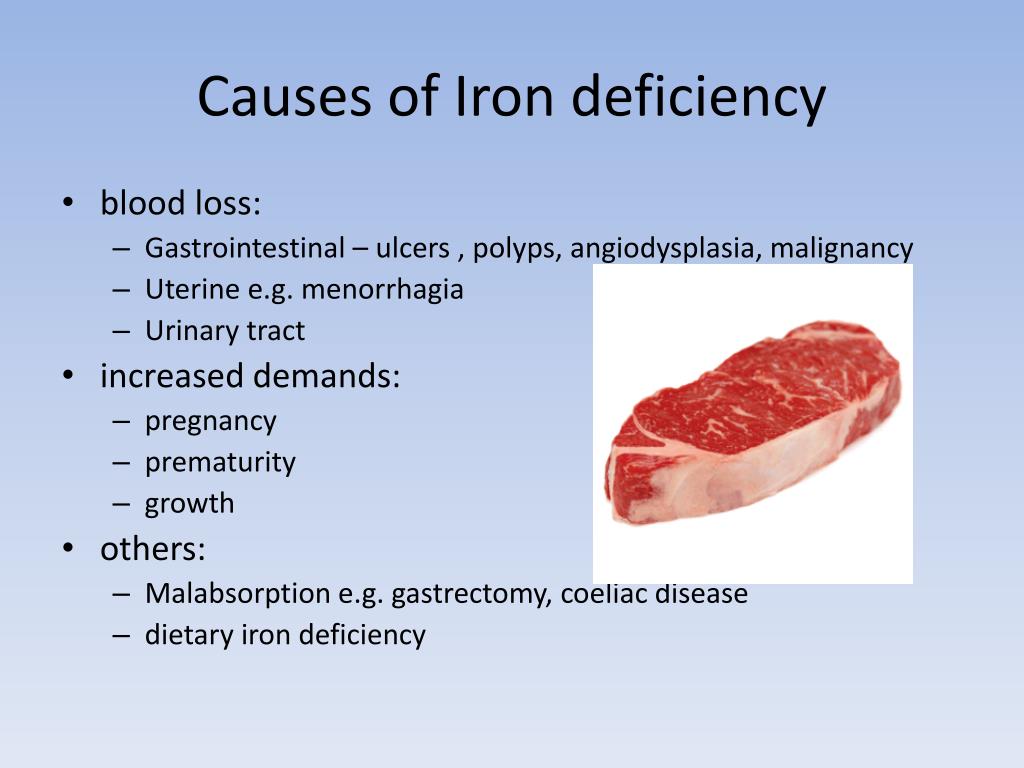 Often, both the vascular and hemostasiological components are involved in the mechanism of bleeding development.
Often, both the vascular and hemostasiological components are involved in the mechanism of bleeding development.
Classification
Depending on the department of the digestive tract, which is the source of hemorrhage, there are bleeding from the upper sections (esophageal, gastric, duodenal) and lower sections of the gastrointestinal tract (small intestine, large intestine, hemorrhoidal). The outflow of blood from the upper parts of the digestive tract is 80-90%, from the lower – 10-20% of cases. In accordance with the etiopathogenetic mechanism, ulcerative and non-ulcerative gastrointestinal hemorrhages are distinguished.
According to the duration, acute and chronic bleeding are distinguished; according to the severity of clinical signs – obvious and hidden; by the number of episodes – single and recurrent. According to the severity of blood loss, there are three degrees of bleeding. A mild degree is characterized by heart rate – 80 per minute, systolic blood pressure – not lower than 110 mm Hg.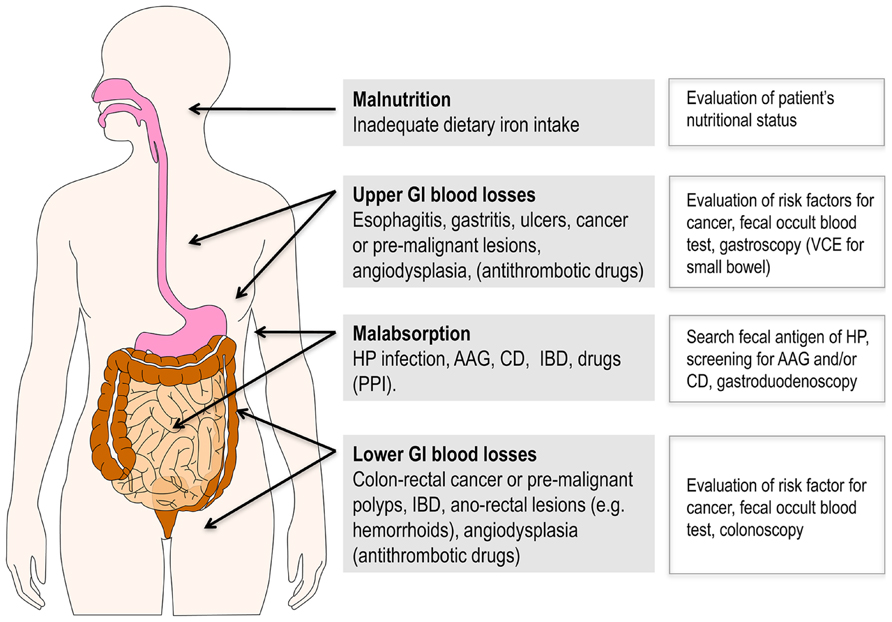 Art., satisfactory condition, safety of consciousness, slight dizziness, normal diuresis. Blood parameters: Er – above 3.5×1012 / l, Hb – above 100 g / l, Ht – more than 30%; BCC deficit – no more than 20%.
Art., satisfactory condition, safety of consciousness, slight dizziness, normal diuresis. Blood parameters: Er – above 3.5×1012 / l, Hb – above 100 g / l, Ht – more than 30%; BCC deficit – no more than 20%.
With moderate bleeding, the heart rate is 100 beats per minute, systolic pressure is from 110 to 100 mm Hg. Art., consciousness is preserved, the skin is pale, covered with cold sweat, diuresis is moderately reduced. In the blood, a decrease in the amount of Er to 2.5×1012 / l, Hb – up to 100-80 g / l, Ht – up to 30-25%. The BCC deficit is 20-30%. A severe degree should be thought of with a heart rate of more than 100 beats. in min. weak filling and tension, systolic blood pressure less than 100 mm Hg. Art., lethargy of the patient, weakness, severe pallor, oliguria or anuria. The number of erythrocytes in the blood is less than 2.5×1012 / l, the level of Hb is below 80 g / l, Ht is less than 25% with a BCC deficiency of 30% or more. Bleeding with massive blood loss is called profuse.
Symptoms
The clinic of gastrointestinal bleeding manifests with symptoms of blood loss, depending on the intensity of hemorrhage. The condition is accompanied by weakness, dizziness, skin poverty, sweating, tinnitus, tachycardia, arterial hypotension, confusion, and sometimes fainting. When the upper gastrointestinal tract is affected, bloody vomiting (hematomesis) appears, which looks like “coffee grounds”, which is explained by the contact of blood with hydrochloric acid. With profuse gastrointestinal bleeding, the vomit has a scarlet or dark red color.
Another characteristic sign of acute hemorrhages from the gastrointestinal tract is tarry stools (melena). The presence of clots or streaks of scarlet blood in the stool indicates bleeding from the colon, rectum, or anal canal. Symptoms of hemorrhage are combined with signs of the underlying disease. In this case, pain in various parts of the gastrointestinal tract, ascites, symptoms of intoxication, nausea, dysphagia, belching, etc. can be noted. Occult bleeding can only be detected on the basis of laboratory signs – anemia and a positive fecal reaction to occult blood.
can be noted. Occult bleeding can only be detected on the basis of laboratory signs – anemia and a positive fecal reaction to occult blood.
Diagnostics
Examination of the patient is carried out by an abdominal surgeon, begins with a thorough examination of the anamnesis, assessment of the nature of vomit and feces, and digital rectal examination. Pay attention to the color of the skin: the presence of telangiectasias, petechiae and hematomas on the skin may indicate hemorrhagic diathesis; yellowness of the skin – about trouble in the hepatobiliary system or varicose veins of the esophagus. Palpation of the abdomen is carried out carefully, in order to avoid increased gastrointestinal bleeding.
From laboratory indicators, erythrocytes, hemoglobin, hematocrit, platelets are counted; study of coagulogram, determination of the level of creatinine, urea, liver tests. Depending on the suspected source of hemorrhage, various radiological methods can be used in the diagnosis: radiography of the esophagus, radiography of the stomach, irrigoscopy, angiography of mesenteric vessels, celiacography. The fastest and most accurate method for examining the gastrointestinal tract is endoscopy (esophagoscopy, gastroscopy, colonoscopy), which makes it possible to detect even superficial mucosal defects and the direct source of gastrointestinal bleeding.
The fastest and most accurate method for examining the gastrointestinal tract is endoscopy (esophagoscopy, gastroscopy, colonoscopy), which makes it possible to detect even superficial mucosal defects and the direct source of gastrointestinal bleeding.
To confirm bleeding and identify its exact localization, radioisotope studies are used (scintigraphy of the gastrointestinal tract with labeled erythrocytes, dynamic scintigraphy of the esophagus and stomach, static scintigraphy of the intestine, etc.), MSCT of the abdominal organs. Pathology must be differentiated from pulmonary and nasopharyngeal bleeding, for which X-ray and endoscopic examination of the bronchi and nasopharynx is used.
Treatment of gastrointestinal bleeding
Patients are subject to immediate hospitalization in the surgical department. After clarifying the localization, causes and intensity of bleeding, treatment tactics are determined. With massive blood loss, blood transfusion, infusion and hemostatic therapy is carried out.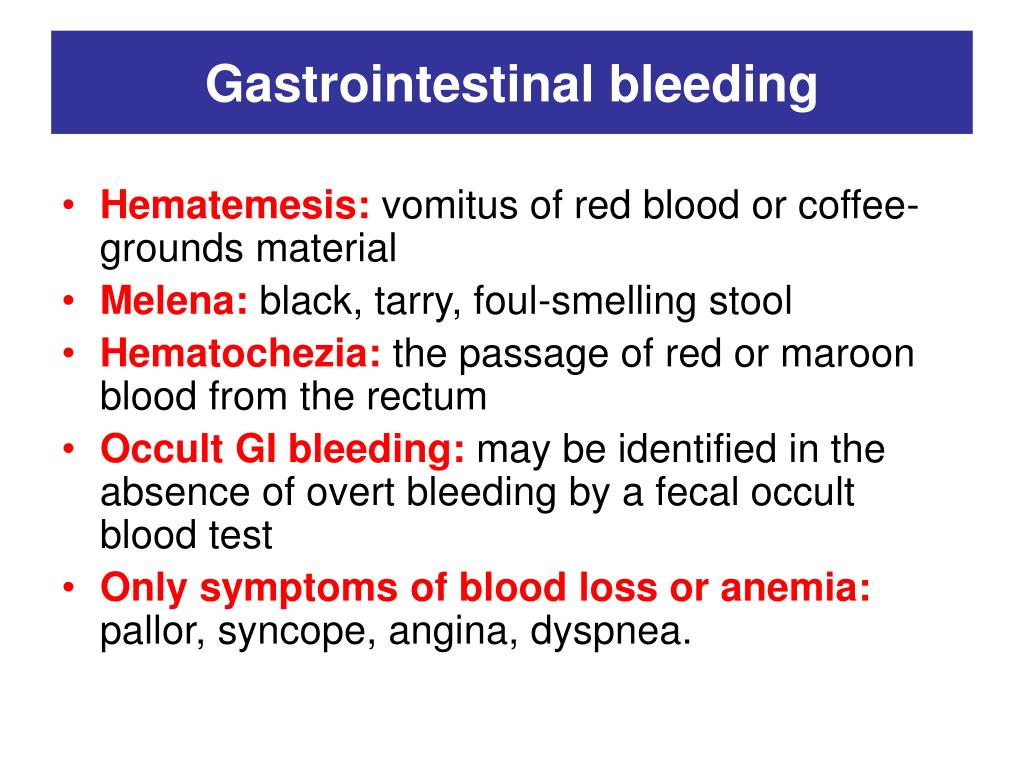 Conservative tactics is justified in the case of hemorrhage, which has developed on the basis of a violation of hemostasis; the presence of severe intercurrent diseases (heart failure, heart defects, etc.), inoperable cancer processes, severe leukemia.
Conservative tactics is justified in the case of hemorrhage, which has developed on the basis of a violation of hemostasis; the presence of severe intercurrent diseases (heart failure, heart defects, etc.), inoperable cancer processes, severe leukemia.
In case of bleeding from varicose veins of the esophagus, its endoscopic stop can be carried out by ligation or sclerosis of the altered vessels. According to indications, they resort to endoscopic arrest of gastroduodenal bleeding, colonoscopy with electrocoagulation or chipping of bleeding vessels. In some cases, surgical control of gastrointestinal bleeding is required.
So, with a stomach ulcer, a bleeding defect is stitched or an economical resection of the stomach is performed. With a duodenal ulcer complicated by bleeding, the stitching of the ulcer is supplemented with stem vagotomy and pyloroplasty or antrumectomy. If bleeding is caused by nonspecific ulcerative colitis, a subtotal resection of the colon is performed with the imposition of an ileo- and sigmostoma.
Prognosis and prevention
The prognosis for gastrointestinal bleeding depends on the causes, the degree of blood loss and the general somatic background (age of the patient, concomitant diseases). The risk of an adverse outcome is always extremely high. Prevention is the prevention and timely treatment of diseases that can cause hemorrhage.
You can share your medical history, what helped you in the treatment of gastrointestinal bleeding.
Sources
- treatment. In case of pain or other exacerbation of the disease, only the attending physician should prescribe diagnostic tests. For diagnosis and proper treatment, you should contact your doctor.
Gastrointestinal bleeding from the pancreatoduodenal artery arrosed with a ligature
Ulcerative bleeding gastroduodenal localization account for about 70-80% of all gastrointestinal bleeding [4]. Bleeding can also be caused by other diseases: varicose veins of the esophagus and stomach, Mallory-Weiss syndrome, hemangioma, lipoma, acute gastric dilatation, trauma, burn disease, etc.
 [2, 3]. Rare causes include bleeding in pancreatic adenoma, sepsis, syringomyelia, beriberi, food intoxication, uremia, radiation sickness, allergies, medicinal ulcers, and surgical interventions [5].
[2, 3]. Rare causes include bleeding in pancreatic adenoma, sepsis, syringomyelia, beriberi, food intoxication, uremia, radiation sickness, allergies, medicinal ulcers, and surgical interventions [5].Mortality due to gastrointestinal bleeding over the past years has been steadily remaining at the level of 5-10% [1, 3]. In the available literature, we did not find a description of the observation, in which the source of bleeding was the pancreatoduodenal artery arrosed by a ligature.
Given the rarity of the cause of bleeding, as well as the difficulties of diagnosis, we present a clinical observation.
Patient H. , 56 years old. Ulcerative anamnesis from the age of 18. Periodically noted seasonal exacerbations, received conservative therapy. Operated 23.08.07 at the place of residence with a diagnosis of perforated ulcer of the duodenal bulb (duodenal ulcer). Produced laparotomy, suturing perforated ulcer by Polikarpov. In November 2011, he noted a deterioration in his condition, severe girdle pain, heartburn, and vomiting appeared.
 Operated on November 18 with a diagnosis of chronic duodenal ulcer complicated by penetration into the head of the pancreas, resection of ⅔ stomach according to Billroth-II in the modification of the Chamberlain-Finsterer.
Operated on November 18 with a diagnosis of chronic duodenal ulcer complicated by penetration into the head of the pancreas, resection of ⅔ stomach according to Billroth-II in the modification of the Chamberlain-Finsterer.6 months after the operation, the patient felt weakness, dizziness, vomiting appeared with blood clots. On May 16, 2012, he was hospitalized in the surgical department at the place of residence. On May 17, EGD was performed, erosive anastomosis, gastroenteroanastomosis ligatures, and Mallory-Weiss syndrome were found. On 23.05, 02.06 and 17.06 there were recurrences of bleeding, hemostatic, antiulcer therapy was carried out. On June 19, the patient was transferred to the Chelyabinsk Regional Clinical Hospital for the purpose of examination and determination of further treatment tactics. Upon admission, the state of moderate severity, the skin is pale, Hb 98 g/l.
On June 19, a diagnostic EGDS was performed. Conclusion: insufficiency of the cardiac sphincter, chronic gastritis of the stomach stump, gastroenteroanastomosis ligatures, ulcerative anastomotic defect (contact effect of the ligature is not excluded).
 At the time of examination, there was no evidence of bleeding. On June 21 and June 23, the patient underwent therapeutic fibrogastroscopy to remove ligatures that could not be removed due to their deep fixation. Conducted conservative therapy aimed at restoring the volume of circulating blood, antiulcer treatment.
At the time of examination, there was no evidence of bleeding. On June 21 and June 23, the patient underwent therapeutic fibrogastroscopy to remove ligatures that could not be removed due to their deep fixation. Conducted conservative therapy aimed at restoring the volume of circulating blood, antiulcer treatment.30.06 the patient complained of nausea, weakness, cold sweat. Severe condition. BP 80/40 mm Hg, heart rate 100 in 1 min. The abdomen is swollen, soft, moderately painful in the epigastric region. No vomiting, no stool. In the general blood test, a decrease in Hb to 85 g / l.
Endoscopy performed on an emergency basis. Conclusion: insufficiency of cardiac sphincter. Operated stomach, moderately pronounced anastomosis. Ongoing arterial bleeding from the gastric stump mucosa. More data on vascular malformation – arteriovenous fistula? The patient was operated on. Performed gastrotomy, removed 300 ml of blood with clots. Produced revision of the stump of the stomach.
 Gastroenteroanastomosis is brightly hyperemic, several ligatures are visible, areas suspicious of the source of bleeding. No other pathological changes were found in the stomach. Resection of the stomach was performed with the formation of an anastomosis on the Rou 9 loop0116 (fig. 1) .Figure 1. Resection of the stomach stump (scheme).
Gastroenteroanastomosis is brightly hyperemic, several ligatures are visible, areas suspicious of the source of bleeding. No other pathological changes were found in the stomach. Resection of the stomach was performed with the formation of an anastomosis on the Rou 9 loop0116 (fig. 1) .Figure 1. Resection of the stomach stump (scheme).05.07 (5 days after the operation) the clinical picture of profuse gastrointestinal bleeding was again noted (weakness, dizziness, blood vomiting appeared). The patient was urgently operated on. There are a lot of blood clots in the stomach and small intestine. An intraoperative endoscopy was performed, in which an adequate examination is impossible due to the presence of large clots in the lumen of the stomach. Produced gastrotomy on the anterior wall, evacuated about 300 ml of clots. The clots spread into the small intestine. The stomach cavity is tamponed. Jejunotomy was performed 50 cm from the gastroenteroanastomosis. The fibrogastroscope was inserted proximally and distally, no source of bleeding was identified.
 Then he was brought into the duodenum, blood clots were found. Duodenotomy was performed, about 100 ml of fresh clots were removed, no source of bleeding was found (fig. 2) .Figure 2. Gastrotomy, enterotomy and duodenotomy (reoperation scheme). Additionally, the stomach cavity was revised, two areas suspicious for bleeding were sutured. No other sources of bleeding were identified. It was decided to end the operation. Opened lumens of organs are sutured in two rows. Two control drains were installed in the subhepatic space, the wound was tightly sutured in layers.
Then he was brought into the duodenum, blood clots were found. Duodenotomy was performed, about 100 ml of fresh clots were removed, no source of bleeding was found (fig. 2) .Figure 2. Gastrotomy, enterotomy and duodenotomy (reoperation scheme). Additionally, the stomach cavity was revised, two areas suspicious for bleeding were sutured. No other sources of bleeding were identified. It was decided to end the operation. Opened lumens of organs are sutured in two rows. Two control drains were installed in the subhepatic space, the wound was tightly sutured in layers.On 10.07 marked weakness, blood flow through the probe from the stomach stump in a volume of 700 ml. During the operation, it was found that the stomach was enlarged, the small intestine was filled with blood up to the middle third. A jejunotomy was performed 30 cm from the ligament of Treitz, blood clots were evacuated, with revision in the direction of the gastroenteroanastomosis, there were no signs of blood leakage distally.
 Intraoperatively, jejunoscopy and gastroscopy were performed, the apparatus was inserted into the duodenal stump, there were no signs of ongoing bleeding. During enteroscopy revealed 4 places in the jejunum, suspicious for bleeding, which are excised, the intestine is sutured in two rows. The enterotomy was sutured; there were no signs of bleeding at the time of bowel closure. A probe was installed in the lumen of the small intestine at the level of the sutured enterotomy. The wound was sutured through all layers.
Intraoperatively, jejunoscopy and gastroscopy were performed, the apparatus was inserted into the duodenal stump, there were no signs of ongoing bleeding. During enteroscopy revealed 4 places in the jejunum, suspicious for bleeding, which are excised, the intestine is sutured in two rows. The enterotomy was sutured; there were no signs of bleeding at the time of bowel closure. A probe was installed in the lumen of the small intestine at the level of the sutured enterotomy. The wound was sutured through all layers.4 hours after the end of the operation, the patient noted the flow of blood from the gastric tube. BP 90/60 mm Hg, heart rate 140 in 1 min. Hb 89 g/l. EGDS was urgently performed: tamponade of the stomach stump and the outlet loop with fresh blood clots is noted. Examination was terminated due to severe massive bleeding. Upper median relaparotomy was performed under intubation anesthesia. The stomach is enlarged in size, the small intestine is filled with blood. Taking into account the findings of the previous operation, indications for resection of the small intestine with possible sources of bleeding were set.
 The gastroenteroanastomosis was removed, there was no blood flow from the stomach stump. The Roux-en-Y anastomosis was removed, and the blood flow from the duodenal stump, which is tamponed, is visible. Produced resection of the small intestine for 1 m. In the resected section of the intestine included gastroenteroanastomosis, all sutures on the small intestine after previous interventions. Removed tampons from the duodenal stump, bleeding resumed. When examining the lower horizontal branch, it is impossible to establish the source of bleeding, since it is located more proximally. After mobilization of the duodenum, it was dissected along its entire length, while in the area of the stump of the bulb, the pancreatoduodenal artery, arrosed with a nylon ligature, from which blood flows, is visible. The artery is stitched, the rate of bleeding has decreased. The stump of the duodenum was separated from the head of the pancreas, the pancreatoduodenal artery was stitched again, the bleeding was stopped.
The gastroenteroanastomosis was removed, there was no blood flow from the stomach stump. The Roux-en-Y anastomosis was removed, and the blood flow from the duodenal stump, which is tamponed, is visible. Produced resection of the small intestine for 1 m. In the resected section of the intestine included gastroenteroanastomosis, all sutures on the small intestine after previous interventions. Removed tampons from the duodenal stump, bleeding resumed. When examining the lower horizontal branch, it is impossible to establish the source of bleeding, since it is located more proximally. After mobilization of the duodenum, it was dissected along its entire length, while in the area of the stump of the bulb, the pancreatoduodenal artery, arrosed with a nylon ligature, from which blood flows, is visible. The artery is stitched, the rate of bleeding has decreased. The stump of the duodenum was separated from the head of the pancreas, the pancreatoduodenal artery was stitched again, the bleeding was stopped. Total blood loss with clots up to 2.5 liters. Imposed gastroenteroanastomosis with a loop of the small intestine in two rows. A probe for nutrition and control was placed behind the anastomosis and brought out through the nose. The duodenum is sutured and a duodenostoma is formed to control bleeding, as well as to drain bile and pancreatic juice. Due to the severity of the patient’s condition, it was decided not to carry out reconstructive interventions on the duodenum. Drainage to gastroenteroanastomosis derived through a puncture in the left hypochondrium. Drainage into the duodenostomy and tampons installed to the duodenum are brought out in the right hypochondrium through a separate incision. The wound was sutured through all layers.
Total blood loss with clots up to 2.5 liters. Imposed gastroenteroanastomosis with a loop of the small intestine in two rows. A probe for nutrition and control was placed behind the anastomosis and brought out through the nose. The duodenum is sutured and a duodenostoma is formed to control bleeding, as well as to drain bile and pancreatic juice. Due to the severity of the patient’s condition, it was decided not to carry out reconstructive interventions on the duodenum. Drainage to gastroenteroanastomosis derived through a puncture in the left hypochondrium. Drainage into the duodenostomy and tampons installed to the duodenum are brought out in the right hypochondrium through a separate incision. The wound was sutured through all layers.The postoperative period was uneventful, there were no recurrences of gastrointestinal bleeding. Bandaging of the median wound under anesthesia was performed in a planned manner, duodenostoma (Fig. 3) was formed in the right hypochondrium, through which from 500 to 2500 ml of bile and pancreatic juice were secreted daily.
 Figure 3. Photograph of the anterior abdominal wall. The arrow indicates the duodenostoma. The contents of the duodenostoma were returned to the probe, which was passed into the jejunum. For 50 days the patient was in the intensive care unit, where intensive treatment was carried out aimed at eliminating anemia, hypoproteinemia and other impaired body functions. Despite the ongoing treatment and the return of duodenal contents, the patient lost 20 kg, weakness, hypoproteinemia increased, and a low albumin content was noted. A decision was made to proceed with life-saving surgery. 03.09the patient was operated on.
Figure 3. Photograph of the anterior abdominal wall. The arrow indicates the duodenostoma. The contents of the duodenostoma were returned to the probe, which was passed into the jejunum. For 50 days the patient was in the intensive care unit, where intensive treatment was carried out aimed at eliminating anemia, hypoproteinemia and other impaired body functions. Despite the ongoing treatment and the return of duodenal contents, the patient lost 20 kg, weakness, hypoproteinemia increased, and a low albumin content was noted. A decision was made to proceed with life-saving surgery. 03.09the patient was operated on.Under intubation anesthesia, the skin was cut along the upper median wound. The abdominal cavity was immediately opened, in which there was a pronounced cicatricial adhesive process due to previous operations. Adhesions and scars are bluntly and sharply divided and dissected. During the revision in the right subhepatic space, duodenum 12×6 cm in size was found, which includes the bulbous section, the descending part and the lower horizontal, which ends blindly in the scars.
 During the revision, a fater nipple with a diameter of not more than 1.5 mm was found, a grooved probe was inserted into it, through which unchanged bile began to separate (Figure 4) Figure 4. Intraoperative photograph. The descending part of the duodenum with the nipple of Vater. Produced papillosphincterotomy for 7 mm with the imposition of two sutures on atraumatic needle 5/0. The tissue of the duodenum is mobilized and excised. Only the nipple of Vater and a part of the descending duodenum sized 5×5 cm remained, which were located on the head of the pancreas. Papilloenteroanastomosis was applied on the Roux-enabled loop with a two-row suture. Hemostasis control. The abdominal cavity is drained. Blood loss during the operation was 300 ml. Taking into account the infection of the wound surface, sutures were applied to the median wound.
During the revision, a fater nipple with a diameter of not more than 1.5 mm was found, a grooved probe was inserted into it, through which unchanged bile began to separate (Figure 4) Figure 4. Intraoperative photograph. The descending part of the duodenum with the nipple of Vater. Produced papillosphincterotomy for 7 mm with the imposition of two sutures on atraumatic needle 5/0. The tissue of the duodenum is mobilized and excised. Only the nipple of Vater and a part of the descending duodenum sized 5×5 cm remained, which were located on the head of the pancreas. Papilloenteroanastomosis was applied on the Roux-enabled loop with a two-row suture. Hemostasis control. The abdominal cavity is drained. Blood loss during the operation was 300 ml. Taking into account the infection of the wound surface, sutures were applied to the median wound.05.09 sanation relaparotomy was performed. Serous hemorrhagic effusion in the abdominal cavity. A small amount of hemorrhagic clots was removed from the right subhepatic space.
 Anastomoses are wealthy. The intestinal loops are not dilated. Sanitation with antiseptics. Drainage of the small pelvis and subhepatic space washed out, left in the same position. The median wound is sutured with leaving alumni. On September 12 (9 days after the operation), the patient began to secrete pancreatic juice in the amount of 100 ml without bile from the median wound. A drain was installed in the wound, through which from 50 to 100 ml of pancreatic juice was released. The fistula closed spontaneously after 2 weeks. The patient was discharged in a satisfactory condition 102 days after admission. During his stay in the hospital, the patient received 12 910 ml fresh frozen plasma, 9450 ml red blood cells.
Anastomoses are wealthy. The intestinal loops are not dilated. Sanitation with antiseptics. Drainage of the small pelvis and subhepatic space washed out, left in the same position. The median wound is sutured with leaving alumni. On September 12 (9 days after the operation), the patient began to secrete pancreatic juice in the amount of 100 ml without bile from the median wound. A drain was installed in the wound, through which from 50 to 100 ml of pancreatic juice was released. The fistula closed spontaneously after 2 weeks. The patient was discharged in a satisfactory condition 102 days after admission. During his stay in the hospital, the patient received 12 910 ml fresh frozen plasma, 9450 ml red blood cells.Thus, in the event of gastrointestinal bleeding after resection of the stomach according to Billroth-II in the Hofmeister-Finsterer modification for a duodenal ulcer complicated by penetration into the pancreas, the following should be taken into account: 1) when suturing the duodenal stump, the pancreatoduodenal an artery, which can subsequently be cut through with a nylon ligature; 2) when searching for a source of gastrointestinal bleeding during surgery, it is imperative to revise the duodenal stump, and if in doubt, perform duodenotomy.


 [2, 3]. Rare causes include bleeding in pancreatic adenoma, sepsis, syringomyelia, beriberi, food intoxication, uremia, radiation sickness, allergies, medicinal ulcers, and surgical interventions [5].
[2, 3]. Rare causes include bleeding in pancreatic adenoma, sepsis, syringomyelia, beriberi, food intoxication, uremia, radiation sickness, allergies, medicinal ulcers, and surgical interventions [5]. Operated on November 18 with a diagnosis of chronic duodenal ulcer complicated by penetration into the head of the pancreas, resection of ⅔ stomach according to Billroth-II in the modification of the Chamberlain-Finsterer.
Operated on November 18 with a diagnosis of chronic duodenal ulcer complicated by penetration into the head of the pancreas, resection of ⅔ stomach according to Billroth-II in the modification of the Chamberlain-Finsterer. At the time of examination, there was no evidence of bleeding. On June 21 and June 23, the patient underwent therapeutic fibrogastroscopy to remove ligatures that could not be removed due to their deep fixation. Conducted conservative therapy aimed at restoring the volume of circulating blood, antiulcer treatment.
At the time of examination, there was no evidence of bleeding. On June 21 and June 23, the patient underwent therapeutic fibrogastroscopy to remove ligatures that could not be removed due to their deep fixation. Conducted conservative therapy aimed at restoring the volume of circulating blood, antiulcer treatment.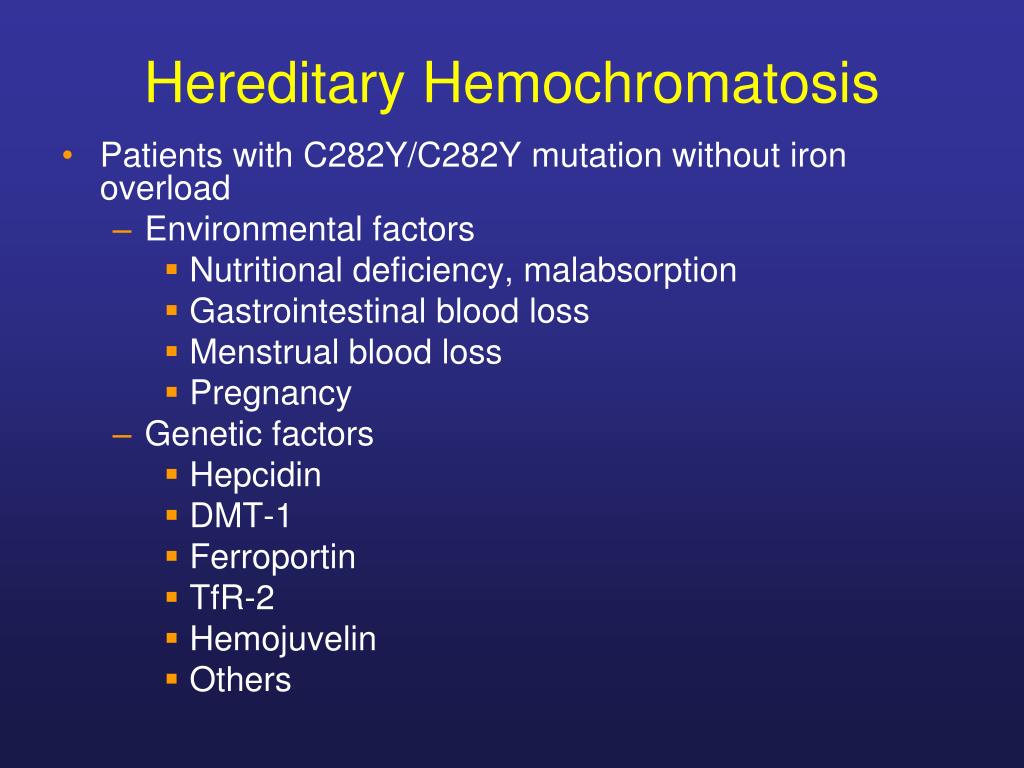 Gastroenteroanastomosis is brightly hyperemic, several ligatures are visible, areas suspicious of the source of bleeding. No other pathological changes were found in the stomach. Resection of the stomach was performed with the formation of an anastomosis on the Rou 9 loop0116 (fig. 1) .Figure 1. Resection of the stomach stump (scheme).
Gastroenteroanastomosis is brightly hyperemic, several ligatures are visible, areas suspicious of the source of bleeding. No other pathological changes were found in the stomach. Resection of the stomach was performed with the formation of an anastomosis on the Rou 9 loop0116 (fig. 1) .Figure 1. Resection of the stomach stump (scheme). Then he was brought into the duodenum, blood clots were found. Duodenotomy was performed, about 100 ml of fresh clots were removed, no source of bleeding was found (fig. 2) .Figure 2. Gastrotomy, enterotomy and duodenotomy (reoperation scheme). Additionally, the stomach cavity was revised, two areas suspicious for bleeding were sutured. No other sources of bleeding were identified. It was decided to end the operation. Opened lumens of organs are sutured in two rows. Two control drains were installed in the subhepatic space, the wound was tightly sutured in layers.
Then he was brought into the duodenum, blood clots were found. Duodenotomy was performed, about 100 ml of fresh clots were removed, no source of bleeding was found (fig. 2) .Figure 2. Gastrotomy, enterotomy and duodenotomy (reoperation scheme). Additionally, the stomach cavity was revised, two areas suspicious for bleeding were sutured. No other sources of bleeding were identified. It was decided to end the operation. Opened lumens of organs are sutured in two rows. Two control drains were installed in the subhepatic space, the wound was tightly sutured in layers. Intraoperatively, jejunoscopy and gastroscopy were performed, the apparatus was inserted into the duodenal stump, there were no signs of ongoing bleeding. During enteroscopy revealed 4 places in the jejunum, suspicious for bleeding, which are excised, the intestine is sutured in two rows. The enterotomy was sutured; there were no signs of bleeding at the time of bowel closure. A probe was installed in the lumen of the small intestine at the level of the sutured enterotomy. The wound was sutured through all layers.
Intraoperatively, jejunoscopy and gastroscopy were performed, the apparatus was inserted into the duodenal stump, there were no signs of ongoing bleeding. During enteroscopy revealed 4 places in the jejunum, suspicious for bleeding, which are excised, the intestine is sutured in two rows. The enterotomy was sutured; there were no signs of bleeding at the time of bowel closure. A probe was installed in the lumen of the small intestine at the level of the sutured enterotomy. The wound was sutured through all layers. The gastroenteroanastomosis was removed, there was no blood flow from the stomach stump. The Roux-en-Y anastomosis was removed, and the blood flow from the duodenal stump, which is tamponed, is visible. Produced resection of the small intestine for 1 m. In the resected section of the intestine included gastroenteroanastomosis, all sutures on the small intestine after previous interventions. Removed tampons from the duodenal stump, bleeding resumed. When examining the lower horizontal branch, it is impossible to establish the source of bleeding, since it is located more proximally. After mobilization of the duodenum, it was dissected along its entire length, while in the area of the stump of the bulb, the pancreatoduodenal artery, arrosed with a nylon ligature, from which blood flows, is visible. The artery is stitched, the rate of bleeding has decreased. The stump of the duodenum was separated from the head of the pancreas, the pancreatoduodenal artery was stitched again, the bleeding was stopped.
The gastroenteroanastomosis was removed, there was no blood flow from the stomach stump. The Roux-en-Y anastomosis was removed, and the blood flow from the duodenal stump, which is tamponed, is visible. Produced resection of the small intestine for 1 m. In the resected section of the intestine included gastroenteroanastomosis, all sutures on the small intestine after previous interventions. Removed tampons from the duodenal stump, bleeding resumed. When examining the lower horizontal branch, it is impossible to establish the source of bleeding, since it is located more proximally. After mobilization of the duodenum, it was dissected along its entire length, while in the area of the stump of the bulb, the pancreatoduodenal artery, arrosed with a nylon ligature, from which blood flows, is visible. The artery is stitched, the rate of bleeding has decreased. The stump of the duodenum was separated from the head of the pancreas, the pancreatoduodenal artery was stitched again, the bleeding was stopped. Total blood loss with clots up to 2.5 liters. Imposed gastroenteroanastomosis with a loop of the small intestine in two rows. A probe for nutrition and control was placed behind the anastomosis and brought out through the nose. The duodenum is sutured and a duodenostoma is formed to control bleeding, as well as to drain bile and pancreatic juice. Due to the severity of the patient’s condition, it was decided not to carry out reconstructive interventions on the duodenum. Drainage to gastroenteroanastomosis derived through a puncture in the left hypochondrium. Drainage into the duodenostomy and tampons installed to the duodenum are brought out in the right hypochondrium through a separate incision. The wound was sutured through all layers.
Total blood loss with clots up to 2.5 liters. Imposed gastroenteroanastomosis with a loop of the small intestine in two rows. A probe for nutrition and control was placed behind the anastomosis and brought out through the nose. The duodenum is sutured and a duodenostoma is formed to control bleeding, as well as to drain bile and pancreatic juice. Due to the severity of the patient’s condition, it was decided not to carry out reconstructive interventions on the duodenum. Drainage to gastroenteroanastomosis derived through a puncture in the left hypochondrium. Drainage into the duodenostomy and tampons installed to the duodenum are brought out in the right hypochondrium through a separate incision. The wound was sutured through all layers.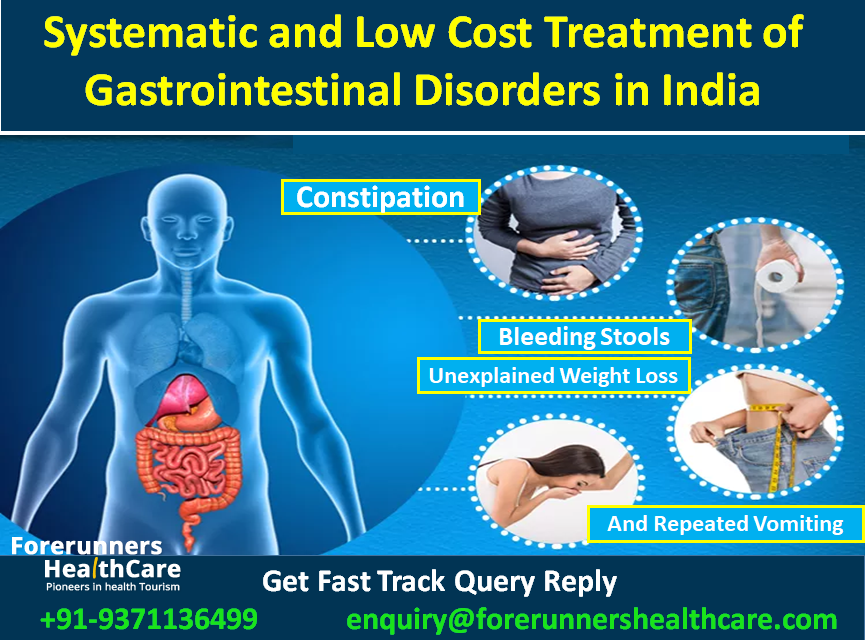 Figure 3. Photograph of the anterior abdominal wall. The arrow indicates the duodenostoma. The contents of the duodenostoma were returned to the probe, which was passed into the jejunum. For 50 days the patient was in the intensive care unit, where intensive treatment was carried out aimed at eliminating anemia, hypoproteinemia and other impaired body functions. Despite the ongoing treatment and the return of duodenal contents, the patient lost 20 kg, weakness, hypoproteinemia increased, and a low albumin content was noted. A decision was made to proceed with life-saving surgery. 03.09the patient was operated on.
Figure 3. Photograph of the anterior abdominal wall. The arrow indicates the duodenostoma. The contents of the duodenostoma were returned to the probe, which was passed into the jejunum. For 50 days the patient was in the intensive care unit, where intensive treatment was carried out aimed at eliminating anemia, hypoproteinemia and other impaired body functions. Despite the ongoing treatment and the return of duodenal contents, the patient lost 20 kg, weakness, hypoproteinemia increased, and a low albumin content was noted. A decision was made to proceed with life-saving surgery. 03.09the patient was operated on. During the revision, a fater nipple with a diameter of not more than 1.5 mm was found, a grooved probe was inserted into it, through which unchanged bile began to separate (Figure 4) Figure 4. Intraoperative photograph. The descending part of the duodenum with the nipple of Vater. Produced papillosphincterotomy for 7 mm with the imposition of two sutures on atraumatic needle 5/0. The tissue of the duodenum is mobilized and excised. Only the nipple of Vater and a part of the descending duodenum sized 5×5 cm remained, which were located on the head of the pancreas. Papilloenteroanastomosis was applied on the Roux-enabled loop with a two-row suture. Hemostasis control. The abdominal cavity is drained. Blood loss during the operation was 300 ml. Taking into account the infection of the wound surface, sutures were applied to the median wound.
During the revision, a fater nipple with a diameter of not more than 1.5 mm was found, a grooved probe was inserted into it, through which unchanged bile began to separate (Figure 4) Figure 4. Intraoperative photograph. The descending part of the duodenum with the nipple of Vater. Produced papillosphincterotomy for 7 mm with the imposition of two sutures on atraumatic needle 5/0. The tissue of the duodenum is mobilized and excised. Only the nipple of Vater and a part of the descending duodenum sized 5×5 cm remained, which were located on the head of the pancreas. Papilloenteroanastomosis was applied on the Roux-enabled loop with a two-row suture. Hemostasis control. The abdominal cavity is drained. Blood loss during the operation was 300 ml. Taking into account the infection of the wound surface, sutures were applied to the median wound. Anastomoses are wealthy. The intestinal loops are not dilated. Sanitation with antiseptics. Drainage of the small pelvis and subhepatic space washed out, left in the same position. The median wound is sutured with leaving alumni. On September 12 (9 days after the operation), the patient began to secrete pancreatic juice in the amount of 100 ml without bile from the median wound. A drain was installed in the wound, through which from 50 to 100 ml of pancreatic juice was released. The fistula closed spontaneously after 2 weeks. The patient was discharged in a satisfactory condition 102 days after admission. During his stay in the hospital, the patient received 12 910 ml fresh frozen plasma, 9450 ml red blood cells.
Anastomoses are wealthy. The intestinal loops are not dilated. Sanitation with antiseptics. Drainage of the small pelvis and subhepatic space washed out, left in the same position. The median wound is sutured with leaving alumni. On September 12 (9 days after the operation), the patient began to secrete pancreatic juice in the amount of 100 ml without bile from the median wound. A drain was installed in the wound, through which from 50 to 100 ml of pancreatic juice was released. The fistula closed spontaneously after 2 weeks. The patient was discharged in a satisfactory condition 102 days after admission. During his stay in the hospital, the patient received 12 910 ml fresh frozen plasma, 9450 ml red blood cells.